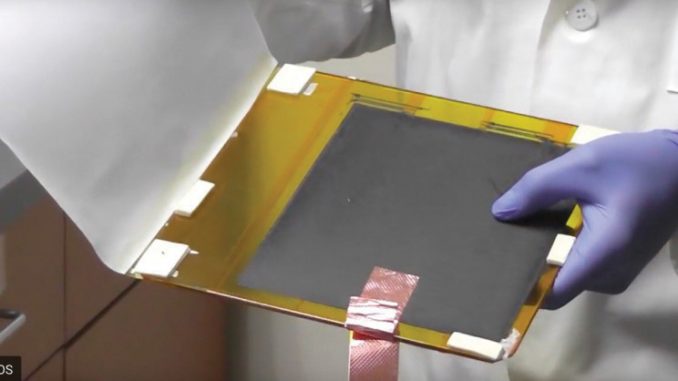
Nano-science has revolutionised the clean energy field by opening up new avenues for synthesising materials that can generate energy on a very small scale and power-specific devices instead of supplying the same to the grid. Meanwhile, wireless energy transmission continues to be explored by scientists and the technology has matured substantially in the past few years.
Researchers from the Clemson’s Nanomaterials Institute (CNI) have combined these two ideas to develop a technology to generate electric power from simple mechanical motion such as ocean waves, the movement of hands and feet, etc. This device is called the wireless triboelectric nanogenerator, or W-TENG, and is an improvement over CNI’s previously designed ultra-simple triboelectric nanogenerator or U-TENG.
While U-TENG comprised easily available materials such as plastic from PET bottles, high temperature tape (polyimide or Kapton), W-TENG comprises a multipart fibre made out of graphene and a biodegradable polymer known as polylactic acid (PLA). A combination of the two is used to 3D print a sheet that forms the bottom electrode of the device. However, PLA is not a very good conductor of electricity and hence the top electrode made of Kapton tape in U-TENG has been replaced with Teflon, a compound used for non-stick cooking utensils, in W-TENG.
These materials have an opposite affinity for electrons and, therefore, when they are brought in contact with each other a voltage is generated. This voltage can then be detected by an external wired circuit, powering any device that is connected to it. The result is a potential of about 3,000 volts, which can sufficiently power 25 standard electrical outlets and the energy can also be stored in a capacitor or a battery until it is needed. W-TENG improves on this application by operating devices wirelessly. Since there is no external circuit present in W-TENG, the charges result in a very strong electromagnetic field around it. This electric field can be sensed wirelessly by appropriate devices and can be used as an actuated remote. For example, W-TENG can be activated by applying a slight pressure on the device and its electric field can be used as a button to open a garage door, or to activate a security system, without using a battery. However, if needed, energy can be stored in batteries or capacitors through wireless energy transfer. In other words, the garage can be opened wirelessly with a small movement without any electrical circuitry involved.
Researchers from CNI have demonstrated the use of W-TENG to operate smart mirrors or screens via a remote control. The same can be deployed to operate an LCD monitor. Therefore, practical feasibility of the technology has already been established, which has opened up new avenues for its use that extends to resource-constrained locations such as oceans, outer space and war-affected areas. Moreover, the technology can provide a clean method of energy generation in developing nations that are still struggling to provide universal access to electricity. In off-grid rural areas, this device could be used to power small devices such as mobile phone chargers and electric bulbs, akin to solar home systems, using only pressure and bodily movement.
The researchers are currently awaiting patent approval so that W-TENG can be scaled-up and commercialised. While Clemson University provided the initial funds for development of the technology, CNI is in talks with various potential partners to start the integration of W-TENG into energy-related applications. However, the researchers believe that before starting commercial operations, there is a need to investigate environment-friendly, electro-negative materials that can replace Teflon. Currently, an organic compound call MXene is being considered for this purpose. Moreover, the team is working to incorporate W-TENG in a host of daily applications requiring movements. These include using W-TENG as a wearable device that generates energy through the movement of arms, feet and shoes; on pedestrian walkways that can produce power from the walking motion; and on roads for generating electricity when cars pass over the device.
Cost economics will play a major role in the mass adoption of this technology. The researchers are looking at funding options and industry partners to finance its development. Given W-TENG’s capability to generate power through mechanical gestures at the point of use, it is expected to create a huge impact on our day-to-day energy utilisation, and revolutionise the way we generate and transfer power.
